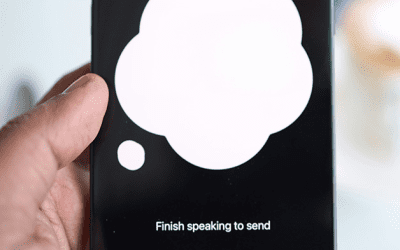You Hired A Professional But You Have Ideas
You realized you need help from a professional with a service that you are not proficient in or have time for.
You research your options and hire a professional to handle that task.
But you have ideas…now what?
A great business partnership consists of two parts.
Part one: a client who can communicate, is organized, and can trust the professional to accomplish what you hired them to do. After all, you hired them to help you do what you could not accomplish.
Part two: a professional who can communicate, is organized, and can earn the client’s trust to accomplish what you’ve been hired to do by listening. It’s important to understand that the client knows their industry much better than you and listening to their input will create a much better product.
What happens when that breaks down?
Both sides become frustrated, and conversations may become unproductive if not a little tense.
So let’s look at how each should refocus to get back on track to rebuilding that trust.
The Client
You wouldn’t hire someone to change the oil in your car and stand over them trying to grab the wrench, would you? I hope not. You would hire that person to do the job that you don’t want to do or can’t do. Just because they have a different process than you doesn’t mean it’s incorrect. The objective is to achieve the goal each of you has set – to change the oil. So sit back and relax as you don’t have to get your hands dirty. Let the professional do their job, pay for the services, and you both will be happy
The Professional
Just because you know how to do something your client may not be qualified for doesn’t mean they don’t want to be involved in some capacity. They will want to be listened to and communicate with you about the project. However, your client may not know how to express their ideas effectively and may require additional meetings to discuss best practices. That doesn’t mean the client doesn’t have valuable input about the project. After all, no one knows their business better than the client. To get the best possible outcome, listen to your client’s input. Listen to what they say, but hear what they mean.
The Challenge
The challenge is when there are extremes on both sides. If one part of this team doesn’t communicate well, it could cause some rework due to a lack of understanding. If one part of the team likes complete control, it will cause some stunted results as you won’t benefit from the abilities of the other. If you both struggle with communication, the relationship won’t last long as you both become frustrated.
The Solution
Speak with each other before working together and ask all the questions you need to ask. Set expectations early to avoid pitfalls down the line on projects and their results. Sometimes it takes multiple projects for you both to get into a grove of how the other works.
Ways to be a better client
- I’ll know it when I see it (too broad, you need to have a better idea of what you’re looking for)
- Inspiration (don’t copy, be inspired and make it your own)
- Communicating (you can’t be helped when you stop speaking to your team)
- Set deadlines (everyone needs deadlines. If not, you could prolong the project just because it’s gotten complicated)
Ways to be a better professional
- Spend the time working on something your clients have described. (don’t just ignore it and do what you want)
- Communicate often. (provide weekly updates on the project and set meetings when needed to keep the project moving)
- Be flexible. (your client has their hands full with their day job and may not be as responsive as you’d like them to be)
- Schedule meetings. (if you and the client need to meet again to get back on the same page, schedule one asap)
Just as with any, your working relationship will take time, trust, and good communication. Working together will make for a better result.







